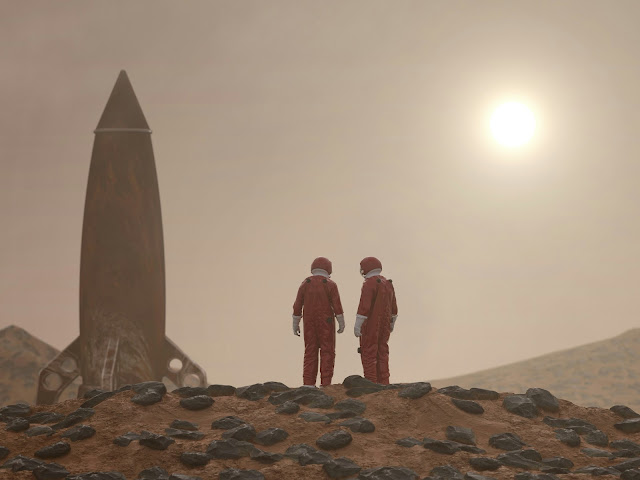How long does it take to get to mars
In the immense breadth of our universe, Mars remains as a tempting objective for human investigation. It's the fourth planet from the Sun, frequently alluded to as Earth's "sister planet" because of its comparative rough organization. However, in spite of its relative closeness to Earth contrasted with other heavenly bodies, How long does it take to get to mars is everything except a fast hike.
How long does it take to get to mars
This question ignites the creative mind of room devotees, researchers, and hopeful space explorers the same. To respond to it, we should dig into the complexities of orbital mechanics, shuttle innovation, and the elements of the Earth-Mars relationship.
The most important phase in understanding the excursion to Mars is embracing the idea of planetary arrangement. Like two lonely wandering souls, Earth and Mars circle the Sun at various paces and distances. Be that as it may, at regular intervals or somewhere in the vicinity, the two planets adjust well, lessening the distance among them and giving a superb open door to interplanetary travel. This peculiarity, known as the "Mars move window," makes way for missions expecting to arrive at the Red Planet.
During these glimpses of daylight, shuttle can leave on a direction that exploits the ideal arrangement among Earth and Mars. The term of the excursion relies upon a few elements, including the drive arrangement of the shuttle, the particular direction picked, and the ideal mission goals
At the core of any mission to Mars such as How long does it take to get to mars lies the drive framework, which decides the speed and productivity of the rocket. Conventional substance impetus, utilized in numerous verifiable missions, offers a somewhat quick however fuel-concentrated approach. In any case, current missions frequently utilize electric drive frameworks, for example, particle engines, which give a more productive and slow speed increase over the long run.
The span of the excursion additionally differs relying upon the direction picked. Direct directions plan to limit travel time by following the briefest way among Earth and Mars. Nonetheless, these directions require huge energy use and may not generally be practical, particularly for bigger rocket or ran missions. On the other hand, "low-energy" directions, for example, the Hohmann move circle, offer a more eco-friendly choice yet stretch out the movement time to a while or much north of a year.
For instance, NASA's Mars Science Research center mission, which conveyed the Interest wanderer to the Martian surface, utilized an immediate direction that required roughly eight months from send off to appearance. Interestingly, maintained missions, for example, those imagined by SpaceX for its Starship shuttle, may require longer travel times because of the need to oblige human tenants and their provisions.
Another vital variable influencing the excursion length is the general place of Earth and Mars along their particular circles. Since the two planets pursue circular ways around the Sun, their separation from one another changes after some time. During the nearest approach, known as resistance, Earth and Mars can be all around as close as 54.6 million kilometers (33.9 million miles) separated. In any case, during resistance, the excursion time is as yet affected by the shuttle's speed and direction. When in transit to Mars, shuttle should battle with the unforgiving real factors of interplanetary space. Infinite radiation, sun oriented flares, and micrometeoroids present huge dangers to both maintained and automated missions. Safeguarding innovation and vigorous shuttle configuration are fundamental for guaranteeing the security and respectability of the space apparatus and its tenants during the excursion.
As the shuttle approaches Mars, one more basic period of the mission unfurls: section, plummet, and landing (EDL). Arriving on Mars presents a novel arrangement of difficulties because of its slim climate and tough landscape. Space apparatus should execute a progression of perplexing moves, including barometrical passage, parachute organization, and fueled drop, to arrive at the surface securely. The progress of EDL tasks can mean the contrast between mission achievement and disappointment.
Lately, a few countries and space organizations have sent off aggressive missions to investigate Mars and How long does it take to get to mars and prepare for future human investigation. NASA's Steadiness meanderer, sent off in July 2020, addresses the most recent section in the organization's continuous investigation of the Red Planet. Furnished with cutting edge instruments and innovation, Persistence plans to look for indications of past microbial life, gather tests for future re-visitation of Earth, and exhibit advancements for future human missions.
In the mean time, different countries, including China and the Unified Bedouin Emirates, have likewise taken huge steps in Mars investigation, with missions, for example, Tianwen-1 and the Emirates Mars Mission (Trust Test) adding to our aggregate comprehension of the Martian climate to know about how long does it take to get to Mars
Looking forward, for knowing How long does it take to get to Mars the commitment of historic disclosures, mechanical advancement, and the extension of mankind's presence past Earth. As we keep on pushing the limits of room investigation, the subject of How long does it take to get to mars, driving us to open the secrets of the Red Planet and move people in the future to try the impossible.







Comments
Post a Comment